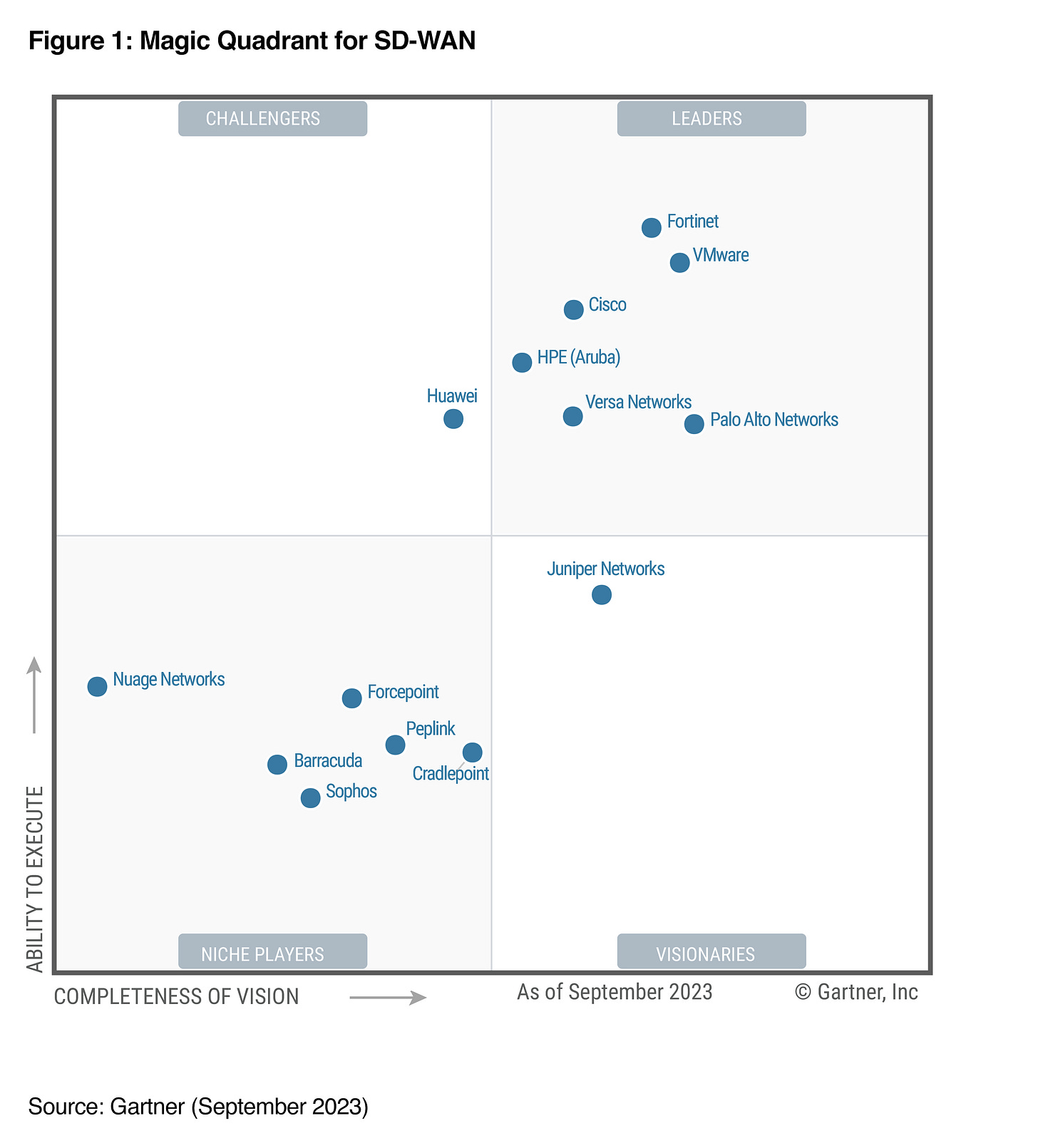Palo Alto Networks, the Cybersecurity Leader
Revealing what lies beneath the cybersecurity giant
Palo Alto Networks is the world’s cybersecurity leader. They offer a wide range of security products and services aimed at a broad spectrum of cybersecurity needs. Palo Alto Networks has grown into a key player in the industry. The core product is a platform that includes advanced firewalls and cloud-based offerings that extend those firewalls to cover other aspects of security.
By taking market share in a growing market, Palo Alto managed to deliver strong returns. The metrics speak for themselves:
2010 revenue: $49M
2015 revenue: $928M
2022 revenue: $5,502M
2026 expected revenue: $11,460M
The valuation of $116B and a PS of 14x reflects this great performance. Reading this article, you will understand Palo Alto’s activity, its strengths and weaknesses. We will also estimate a fair price and identify some important issues that could reduce shareholder return.
Company overview
Palo Alto provides products and services in the cybersecurity sector:
The core product offering is a platform providing different features like firewalls, SASE (Secure Access Service Edge) and SD-WAN (Software-Defined Wide Area Network)
This platform integrates features dedicated to cloud network security or AI-driven security
The services aim to provide threat intel and incident response to customers
The company always try to improve the platform to make it more comprehensive and ubiquitous. They also want to increase the AI place across the platform.
Palo Alto is the world’s leader in cybersecurity. The chart clearly shows that they are gaining market share constantly. Fortinet is also gaining market share. Cisco avec Check Point are losing market share. We can also see that the market is concentrating. This will probably continue as the feature and service range is very important for the clients and tend to favor the biggest players. After a high-growth phase, the market is currently consolidating.
To develop its platforms, products and services, Palo Alto Networks has done a lot of acquisitions. Here are some important examples:
2014 - Cyvera for $200M
2018 - Evident.io for $300M
2019 - Demisto for $560M + Twistlock for $410M
2020 - CloudGenix for $420M + Crypsis for $265M + Expanse for $800M
2022 - Cider Security $300M
2023 - Dig Security for $400M + Talon Cyver Security for $625M + Dig Security for $400M
Peers recognition
Palo Alto has often been recognized as one of the best performing companies in the cybersecurity sector by different analysts for years. This constant leadership is a sign of a good product offering and a valid strategy. The consistency is all the more commendable given that the their market is in constant change.
Cyber threats
Coming from foreign governments, competitors or cybercriminals, the threats are more and more frequent and various. The number of attacks increases, the cost per successfull attack increases and the reaction time needed to manage a security breach reduces.
The total cost of a data breach has been $1.7M on average in 2023 while more than 200 days are usually necessary to identify a breach. Fun fact, more than 70% of the breaches are caused by humans.
The recent war in Ukraine has shown the importance of cybersecurity in current and future major conflicts. Taken together, these factors demonstrate the current and future importance of the sector.
Stock-based compensation
SBC are in my opinion the main issue for this company with share dilution. If SBC can be a good idea, they represent too large a proportion of the company’s FCF.
For 2021, 2022 and 2023, SBC was $0.89B, $1.01B and $1.07B respectively. In the meantime, FCF was $1.37B, $1.79 and $2.63B, meaning than more half the FCF was used for SBC from 2021 to 2023. The FCF margin is therefore closer of 15-18% than 30%. The share outstanding went from 287M to 315M from 2019 to 2024 despite a positive FCF.
As a comparison, 2020, 2021 and 2022 Fortinet’s SBC were $600M vs $3.5B FCF so around 17%, 3 times less, where the share outstanding went from 851M in 2018 to 767M right now.
Market by 2030
Keep reading with a 7-day free trial
Subscribe to Quality Stocks to keep reading this post and get 7 days of free access to the full post archives.







